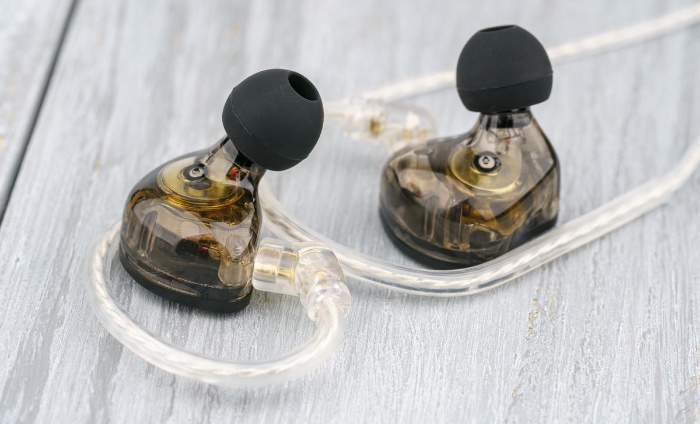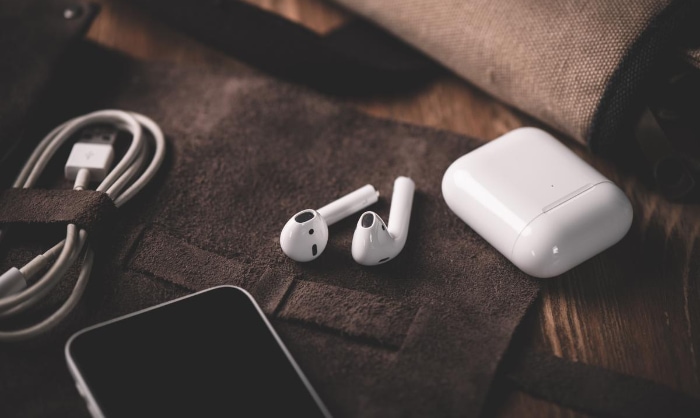Earbuds vs. IEMs: Choosing Your Sound Companion

Choosing the right audio device can have a significant impact on your listening experience. With the market flooded with various types of audio devices, making a decision can be overwhelming.
Among the myriad of options available, earbuds and In-Ear Monitors (IEMs) have emerged as two of the most popular choices. Each offers its unique blend of features, advantages, and drawbacks, leaving many consumers puzzled about which one to pick.
Unraveling the World of Earbuds
Earbuds are compact, portable audio devices that sit on the outer part of your ear canal. Unlike headphones, they do not encompass your entire ear and, instead, rely on the outer part of your ear for support.
Earbuds are a common sight, often accompanying mobile phones and MP3 players.
The Functioning of Earbuds
Earbuds operate through miniaturized speakers placed directly outside your ear canal. These speakers transform electrical signals into sound waves, delivering audio directly towards your ear.
Earbuds generally have a ‘one size fits all’ design, but they may vary in terms of shape, color, and additional features like built-in microphones or volume control buttons.
Advantages of Earbuds
Ease of Use: Earbuds are incredibly user-friendly. With no setup required, you simply plug them into your device and start listening.
Cost-Effectiveness: Generally, earbuds are priced lower than IEMs, making them a more affordable option for casual listeners.
Portability: Earbuds are lightweight and easy to carry around, making them ideal for individuals who are always on the move.
Comfortability for Casual Use: For quick listening sessions or non-critical listening, earbuds can provide adequate comfort and sound.
Disadvantages of Earbuds
Lower Sound Quality: Due to their design and size, earbuds generally cannot match the sound quality of larger headphones or IEMs.
Lower Noise Isolation: Earbuds do not form a seal in your ear canal, which can allow ambient noise to leak in and disturb your listening experience.
Potential Discomfort: While most earbuds are designed with comfort in mind, some people might find them uncomfortable to wear for long periods due to their ‘one size fits all’ design.
Exploring the Realm of In-Ear Monitors (IEMs)
In-Ear Monitors, commonly referred to as IEMs, are a type of earphone designed to fit snugly within the ear canal. They create an isolated listening environment by sealing the ear canal, which results in superior sound quality and minimal ambient noise interference.
Originally used by professional musicians and audio engineers to monitor sound during performances, IEMs have gained mainstream popularity due to their superior sound quality and noise isolation.
The Functioning of IEMs
Unlike earbuds, IEMs work by inserting ear tips into the ear canal, forming a seal that isolates the listener from external noise. The sound is then directly funneled into the ear.
Most IEMs come with a variety of ear tips to ensure a comfortable and secure fit for different ear sizes. High-end IEMs even offer custom molded ear tips for an unmatched fit and comfort.
Advantages of IEMs
Superior Sound Quality: Thanks to their design and the materials used, IEMs typically offer superior sound quality, including better bass response and more detailed sound reproduction compared to earbuds.
Customizability and Personal Fit: Most IEMs come with multiple sizes of ear tips, allowing for a better fit. Some high-end models can even be custom-molded to the user’s ears.
Excellent Noise Isolation: IEMs create a seal in the ear canal, providing excellent noise isolation and a private listening environment.
Disadvantages of IEMs
Higher Price Point: The advanced technology and customizability of IEMs often make them more expensive than earbuds.
Can Be Less Comfortable: Despite the variety of ear tips, some people might find IEMs less comfortable for long-duration usage, especially if they are not used to the in-ear fit.
Possible Hearing Damage: Due to their ability to seal off external noise, there’s a risk of potential hearing damage if music is played at high volumes for extended periods.
Comparing Earbuds and In-Ear Monitors (IEMs)

When choosing between earbuds and IEMs, understanding their strengths and weaknesses in relation to each other is crucial.
Sound Quality Comparison
When it comes to sound quality, IEMs generally have the upper hand. They offer a more immersive and detailed listening experience, thanks to their superior drivers and the sound-isolating seal they form in the ear canal.
Earbuds, while offering decent sound quality, may not provide the same level of bass response and detail due to their design and positioning outside the ear canal.
Comfort Comparison
Comfort can be highly subjective and depends largely on personal preference. Earbuds, resting on the outer ear, can be comfortable for short-term usage but may cause discomfort over extended periods.
On the other hand, IEMs, especially those with custom-molded ear tips, can provide exceptional comfort and a secure fit. However, some users might find the in-ear fit intrusive or uncomfortable, especially during initial usage.
Durability Comparison
In terms of durability, it’s a mixed bag. Some high-quality earbuds can be quite robust and withstand regular wear and tear.
Similarly, IEMs, particularly high-end models, are designed to be durable, often featuring replaceable cables and sturdy construction. But ultimately, the lifespan of both devices depends on usage habits and the care taken by the user.
Price Comparison
Generally, IEMs tend to be more expensive than earbuds, reflecting their superior sound quality and advanced features. Earbuds are often less expensive and are suitable for those with budget constraints.
However, both categories have a wide price range, from affordable models to high-end luxury options.
Use Case Scenarios
Casual Listening: For casual or non-critical listening, like podcasts or audiobooks, earbuds could be a cost-effective and convenient choice.
Professional Use / Musicians: IEMs are the go-to choice for musicians and audio professionals who require precise audio monitoring and excellent noise isolation.
Sports and Physical Activities: Depending on the activity, both could be suitable. Earbuds are often lightweight and less intrusive, while IEMs with a secure fit can withstand vigorous movement.
Long-Duration Usage: If comfort and sound quality are paramount for extended listening sessions, IEMs, especially those with custom ear tips, may be the better choice.
Making the Choice
With a better understanding of earbuds and IEMs, you’re well-equipped to start considering which one might be right for you. But before making your final decision, it’s important to consider certain factors to ensure your chosen audio device meets your needs.
Sound Quality
Sound quality is often a deciding factor for many people when choosing an audio device. If you are an audiophile or a professional who needs accurate sound reproduction, IEMs are likely to serve your needs better.
For casual listeners, earbuds may be sufficient.
Comfort and Fit
The choice between earbuds and IEMs also heavily depends on personal comfort. It is important to remember that while earbuds sit outside the ear canal and may feel less intrusive, IEMs offer a more tailored fit, which can enhance comfort, especially for long-duration use.
Budget
Budget is a critical consideration when purchasing audio devices. Earbuds are generally less expensive and can provide good value for those on a tight budget.
IEMs, while often more expensive, offer superior sound quality and features that may justify their higher price tag.
Intended Use
Consider your primary use for the audio device. If you’re a professional musician or audio engineer, IEMs are likely the best choice for accurate sound monitoring.
If you’re a fitness enthusiast, you might prefer the lightness and fit of certain earbuds or sports-specific IEMs. For daily commuting, the superior noise isolation from IEMs could be beneficial.
Brand Reputation and Reviews
Finally, it’s essential to consider the reputation of the brand and the reviews of the product you’re considering. Reliable brands often have better customer support and warranty terms.
Reviews can give you insights into factors like durability, long-term comfort, and sound quality that are not always apparent from product descriptions.
Conclusion
Selecting the perfect audio device can be a daunting task, given the multitude of options available. The choice between earbuds and In-Ear Monitors (IEMs) is no exception.
Both audio devices offer unique advantages that cater to different user needs and preferences.
Earbuds, with their easy-to-use design and lower cost, serve as a great option for casual listeners or those on a budget. Their light and compact nature makes them a portable companion for individuals on the go.
On the other hand, IEMs, with their superior sound quality and excellent noise isolation, cater to professionals and audiophiles seeking a high-quality listening experience. While they may come at a higher price point, the advanced features and personalized fit make them worth considering for those prioritizing sound quality and long-term comfort.
Ultimately, the choice boils down to your personal needs, preferences, and budget. By understanding the fundamental differences between earbuds and IEMs, along with considering the factors outlined in our buying guide, you can make a well-informed decision that brings the most satisfaction to your listening experience.
Remember, the perfect audio device is the one that best complements your lifestyle and enhances your enjoyment of the music you love. Happy listening!


